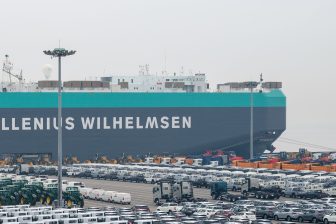
G2 Ocean posts higher 2022 income as vessel earnings jump
G2 Ocean has closed the year 2022 with a bump in net income as net earnings per vessel jumped 40.6 per cent in 2022, compared to 2021. The company posted a $3.3 million net income for the year 2022, which compared to $3.1 million reported the year prior.
The company noted that the dry bulk sector experienced a strong shipping market for the majority of the year with freight rates significantly above the levels of recent years.
G2 Ocean’s gross revenue of $2.13 billion, up from $1.45 billion in 2021, consists mainly of freight income whereof $2.08 billion in the open hatch segment and $42 million in the conventional bulk segment.
The net earnings per vessel per day in 2022 in the open hatch segment increased by 77.3 per cent compared to 2021, while the net earnings per vessel is 40.6 per cent higher in 2022 compared to 2021 in the conventional bulk segment, driven by the firm shipping market rebound with increasing freight rates.
Disrupted market
In 2022, the maritime sector was again managing wide-ranging disruption from global events including the onset of the Ukraine conflict, continued impacts from the pandemic, a slowing world economy and inflation, G2 Ocean noted in its annual report.
After a Covid-19 “rebound” in 2021, the dry bulk shipping market that G2 Ocean operates within remained firm for the majority of 2022. The global seaborne trade stalled at 12 billion metric tons, reaching the same levels as in 2021.
For 2023, the global growth is forecasted to be 2.65 per cent by the IMF following a series of downgrades through 2022. A glimmer of economic optimism is coming from preliminary data suggesting that the inflationary pressures were gently easing at the end of 2022. This suggests that prices will see less of a steep climb into 2023 and Central Banks could start slowing the pace of their interest rate hikes.
The bulk sector
For bulk, the rates generally eased back in 2022 amid pressure on demand and easing congestion, with average bulk carrier earnings falling 24 per cent year-on-year. The rates were generally more resilient in the segment with smaller ship sizes where rate levels remained fairly “healthy” for much of the year.
Recent demand headwinds appear likely to persist into 2023, as deteriorating global macroeconomics conditions may limit imports in key regions, especially for minor bulks, whilst uncertainty around the outlook for the Chinese property sector and Covid-19 impacts makes the 2023 outlook for key dry bulk segments less clear.
Supply growth appears to set slow in 2023, with the orderbook at a 30-year low of about 7 per cent of the fleet capacity. High slippage levels on newbuild deliveries and an increase in demolition numbers (due to softer market conditions and as new environmental regulations come into force) are expected to mitigate the fleet growth in 2023. It is expected that this will lead to a relatively balanced market in 2023, but with economic recovery and dry bulk demand expansion to grow more in the second half of the year than the first.
2023 has started off with a slow down for the shipping market, however with the prospect of China to revive post-Covid-19, G2 Ocean remain optimistic for the shipping market in 2023.
You just read one of our premium articles free of charge
Register now to keep reading premium articles.




